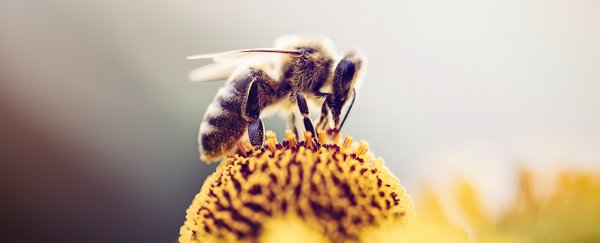Hollywood has never produced a movie about South Africa's Cape honeybees, and frankly it's a travesty.
The pitch writes itself: Aspiring to become a queen, a lowly Apis mellifera capensis worker leaves home to invade a rival nest and successfully fills it with her clones. All thanks to the talents of a single, amazing gene that allows her to ditch men.
Research by scientists from the University of Sydney means we can even slap 'loosely based on a true story' under the title credits. Unlike the majority of related honey-loving subspecies, any old Cape honeybee sister can use her oversized ovaries to produce a perfume that tells the hive she's now in charge.
The only thing keeping the peace most of the time is the calming scent of pheromones from the rightful queen's own mandibular glands.
If her majesty dies, it's game on, with any number of workers vying to assert their reproductive dominance over the colony all at once.
"Instead of being a cooperative society, Cape honeybee colonies are riven with conflict because any worker can be genetically reincarnated as the next queen," says behavioural geneticist Benjamin Oldroyd.
"When a colony loses its queen the workers fight and compete to be the mother of the next queen."
On occasion, a worker with lofty goals might even set off for another colony of bees altogether, trying her luck at becoming a 'false' queen by forcing hapless strangers to raise her kids, all of which happen to be just like her.
You can just feel the drama already.
Every year, thousands of commercial beehives are ruined by such parasitic infestations of Cape honeybees, meaning apiarists are keen to work out the secrets of these infiltrators in the hope they can protect their colonies.
The ability to reproduce by laying unfertilised eggs is a type of parthenogenesis referred to as thelytoky, and among honeybees it's unique to the Cape subspecies.
Working out exactly what makes it so special has led to decades of research, hunting through its genome for variations that might help it ditch male bees altogether.
For this research team, success came when thelytokous A. m. capensis were crossed with non-thelytokous East African lowland honeybee (A. m. scutellata) - and genetic markers among the generations were compared.
Usually, this is the part where we say how complicated genetics happens to be. But in this case, just one single gene on chromosome 11 was all that was responsible.
Labelled GB45239, it somehow switches on the Cape honeybee's ability to create eggs that can carry on developing into a new, genetically identical adult, most likely by affecting how the chromosomes are segregated.
More research is required to decipher the mechanisms behind these virgin births, and potentially find ways to harness them for better pest management.
Pragmatic benefits aside, the discovery contributes a tiny piece of the puzzle surrounding the evolution of sex as a means of procreation.
If nothing else, it's fascinating that a few mutations in the right place can affect how an entire population's reproductive strategy works.
"Sex is a weird way to reproduce and yet it is the most common form of reproduction for animals and plants on the planet. It's a major biological mystery why there is so much sex going on and it doesn't make evolutionary sense," says Oldroyd.
"Asexuality is a much more efficient way to reproduce, and every now and then we see a species revert to it."
Somebody get Netflix on the line.
This research was published in Current Biology.
